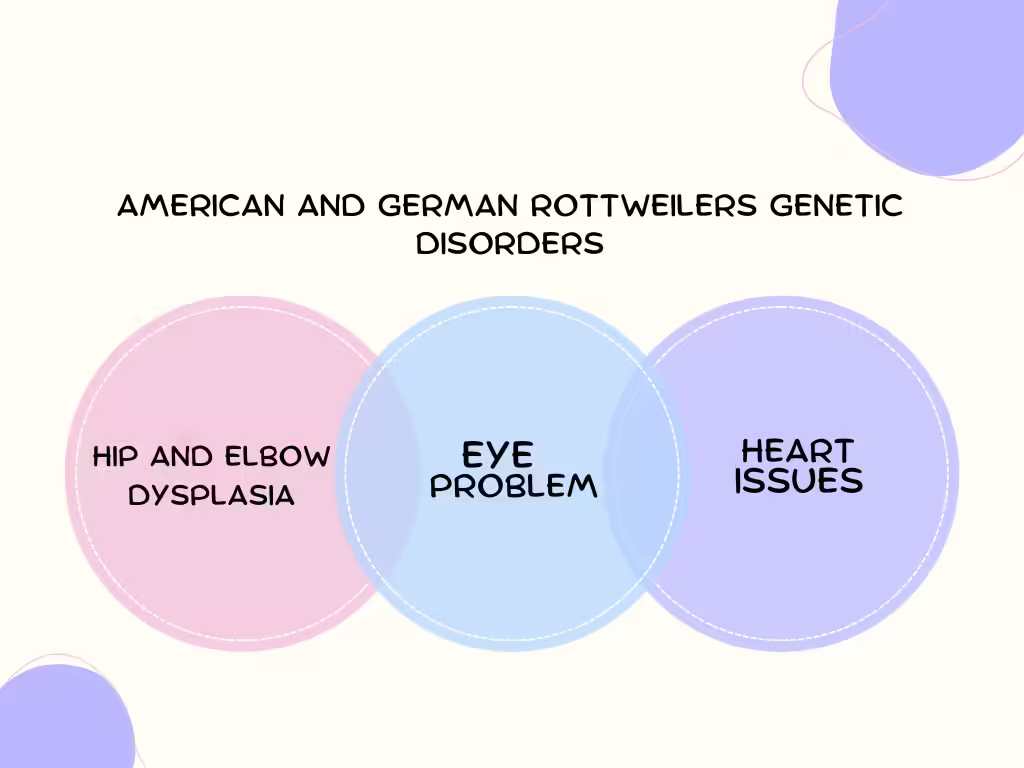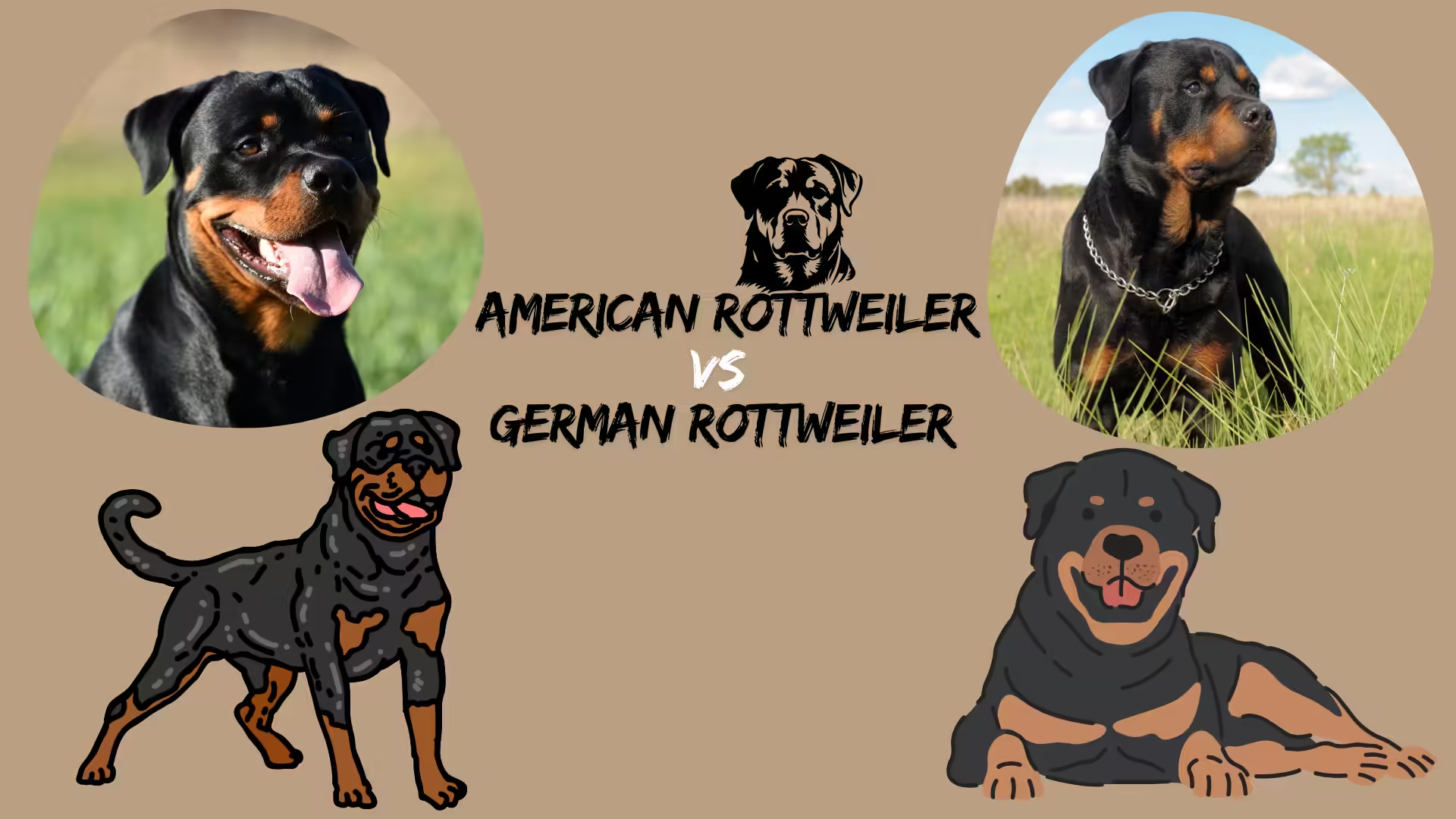American Rottweiler vs German Rottweiler: A Comprehensive Guide to Their Key Differences
Rottweiler is a powerful working dog breed of Germany, but it has divided into two specific breeds: American Rottweiler and German Rottweiler. Although these belong to the same genealogical lineage, they are different not only as far as their appearance and rules for breeding but also temperament. Here’s a presentation on the differences between American and German Rottweilers to guide you on which best serves your purposes.
History and Origins
- German Rottweiler: Original breed, named after the town of Rottweil in Germany. This dog was bred to be a herder and protector of the livestock.
- American Rottweiler: Cousins who share the same origin but have evolved over time with more emphasis on American breeding standards. Most differences have been from lack of fewer guidelines that were not followed.
Breed Standards and Recognition
- German Rottweiler: The breeding standards are strict since they are governed by Allgemeiner Deutscher Rottweiler Klub (ADRK). ADRK’s conditions are strictly regarding maintaining health, temperament, and appearance, not docking their tails, and aiming for working ability.
- American Rottweiler: The standards here, under American Kennel Club (AKC), are softer. A lot have their tails docked, and they come in several different variations because of less stringent breeding.
Physical Differences
- Size: Rottweilers both from America and Germany nearly have the same height and weight: they are between 24 to 27 inches tall and weigh 80 to 110 pounds. German Rottweilers are generally more muscular and slightly bulkier, with a broader chest compared to the American variety.
- Head and Face: German Rottweilers have a bigger, wider head and more muscular body. The muzzle is wider, and the eyes are almond-shaped. The American Rottweiler tends to appear leaner, with a narrower head and an overall lighter build compared to the German variety.
- Tail: Tail docking is banned in Germany, so full-tail German Rottweilers abound, whereas most American Rottweilers have docked tails.
Temperament and Personality
- German Rottweiler: They are bred to work and tend to be calmer, more confident, and even have a strong guarding instinct. Their demeanour is as serious and focused as it can get, very suitable for police, military, and guard dog work.
- American Rottweiler: Because their breeding is less strict than the German, they can have more possibilities in showing different temperaments. They are a little more outgoing, but this cannot undo the general features of the breed-protective, affectionate, and devoted family.
Working Abilities
Both breeds are considered working dogs, but there is a greater instinctual drive to herd and guard in the German Rottweiler due to selective breeding. They will do better at tasks that require concentration, discipline, and endurance. The American Rottweiler, although robust and capable, does not nearly hold up as well with regards to working tasks of this sort; it has been bred to a greater extent for companionship rather than work.
Health Concerns
Both American and German Rottweilers can be susceptible to the following genetic disorders:

By virtue of the more rigorous breeding restrictions, German Rottweilers often come from fitter stock, and so are less likely to be susceptible to genetically inherited diseases.
Coat and Color
- German Rottweiler: The ADRK describes a dense, medium-length coat, with acceptable colours being black and mahogany, black and tan or black and rust.
- American Rottweiler: The AKC recognizes a broader range of coat colors, like blue and red combinations, which are much more apparent in the American breed.
Training and Socialization
- German Rottweiler: They require intensive, constant training and socialization as early as possible. Their head-strong character allows them only with experienced owners.
- American Rottweiler: Intellect itself highly trainable and occasionally more obstinate. Positively reinforced to avoid aggressive behavior.
Breeding Practices and Kennel Club Differences
- German Rottweiler: German breeders strictly hold to the ADRK standards, which guarantee that Rottweilers are healthy, well-tempered, and free from genetic defects. Only dogs cleared of strict tests are allowed for breeding.
- American Rottweiler: There are regulated breeding practices by the AKC, but these standards are a bit loose in allowing more variation in American Rottweilers’ both physical and temperamental characteristics.
Tail Docking Debate
The ADRK does not permit tail docking, and insists that the tail is included in the standard of the Rottweiler. In this country, tail docking is common, and many feel it is part of giving the dog an appearance, which looks more “traditional”.
Gait and Movement
Both varieties move with a strong, self-assured gait, but the German Rottweiler is bred to move smoother and more fluidly, as its working bloodline was stronger. American Rottweilers sometimes display slightly less coordination in comparison, particularly in terms of body type and breeding.
Lifespan
The average life span for both breeds is about 8-10 years, although a well-bred German Rottweiler may have a slightly higher life expectancy due to better health screening in breeding programs.
Cost and Availability
- German Rottweiler: Due to the rigid breeding procedures, German Rottweilers come with a greater price tag: between $2,700 to $3,000, shipping added for imports from Germany.
- American Rottweiler: These are a bit more budget friendly and can vary from $1,500 for an 8-week-old puppy.
Which One is Right for You?
- If you want a very obedient working dog, the German Rottweiler would be the better one for you. They are for people or professionals that need a trustworthy, strong guard or working dog.
- If you prefer having a companion which is protective but perhaps more laid-back in temperament, then an American Rottweiler might be the best choice that would appeal to your preference. They are also readily available and not too expensive.
Conclusion
American Rottweilers are loyal, strong, and protective. Key differences in breeding, appearance, and temperament separate the two, and that is why they fit into different lifestyles and purposes. It really all depends on what you want out of a dog, if it is a strict working dog or a family companion.
Frequently Asked Questions (FAQs)
Are German Rottweilers healthier than American Rottweilers?
German Rottweilers tend to be healthier owing to intensive breeding that reduces genetic conditions.
Can American Rottweilers be trained for police work?
Yes, but not as many can be found in such duties as German Rottweilers as they belong to a working bloodline.
Why do American Rottweilers have docked tails?
Tail docking is a common procedure in the U.S. for cosmetic reasons and for fulfillment of AKC breed requirements.
Are German Rottweilers more aggressive?
That is not necessarily true. Aggression in both types is largely dependent on socialization, training, and the dog’s environment.
Can American and German Rottweilers be bred together?
Yes. However, this could lead to variations in terms of physical appearance and temperament.
How can I find a reputable Rottweiler breeder?
Search for breeders certified either by ADRK (Germany) or AKC (USA), focusing on health and temperament.







